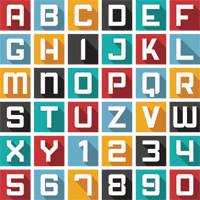Low Volume, High Impact Email with S.A.T.

Three percent might not seem like much, but email's conversion rates are higher than social (.71 percent) and search (1.95 percent) combined, according to Monetate's Ecommerce Quarterly, Q1 2013. For many, this makes email marketing a main driver of conversions and revenue in their organizations, regardless of their audience size.
Not every business, however, knows how to maximize the use of their email list. Luckily, many solutions (for a list of 50 top email service providers, flip to page 14) can make once-sophisticated practices like segmentation, automation and testing (S.A.T.) less resource intensive. Let's turn our attention to low-volume senders (think less than 1,000 emails or so per send) and how they can leverage S.A.T. to turn a small list into a high impact one.
SEGMENT
Batch-and-blast emails are an outdated practice, but still heavily relied on by smaller businesses who think they cannot afford to personalize their emails. This needn't be the case. Not only do most ESPs have built-in segmentation features, but companies can also leverage the data they already have to send the most relevant information to email subscribers and increase engagement (e.g. opens, clicks) as a result.
One very accessible way to segment an email list is by sign-up date. For example, those who signed up within the last, say, seven days, are likely to respond more positively to a message introducing some of a retailer's most popular products than subscribers who registered seven years ago and already know this information, or have even purchased some of those popular products already.
Segmenting by interest groups can also help marketers get better results. This can be done by including interest-based questions on an email sign-up form or asking users to update their profiles.
Listrak CEO Ross Kramer suggests an "un-birthday" campaign to encourage subscribers to update their profiles, along the lines of, "We know it's not your birthday, but here's a special offer. Go to our email preference center, so we can email you a promotional offer when it is your special day."
This campaign can be used to get more information out of email recipients (to personalize future emails to them) and as a win-back tool since it offers an incentive. Consider using last-order dates or last-click dates to see which groups to re-engage.
Hopefully, you can see that segmentation needn't be complex; most times the work is already done with features built in to popular ESPs.
AUTOMATE
Smaller merchants have to do more with less, which is why automation is a terrific small business tactic. By automating certain email campaigns, merchants can drive revenue without monopolizing their staffs' time. Automation opportunities include triggered welcome series, shopping cart abandonment emails, backin- stock programs, etc.
Bronto Software Marketing Research Manager Jim Davidson suggests focusing on cart abandonment reminders, because it's a well-reported statistic that about 70 percent of carts are abandoned. Through integrations with Magento and other ecommerce platforms, Bronto makes it easy to create and trigger a series of "designed-to-convert" messages when a cart is abandoned in a company's ecommerce system. Bronto sees an uptick of 20 percent in conversions with these email reminders, which can even be as simple as "come back to shop" and don't even without any incentives.
These automation opportunities, along with drip campaigns (a timed series of emails that are sent to opt-in recipients based on registration dates), are par for the course, but are still underutilized by many smaller merchants. But this next automation opportunity might spin their virtual heads - weather-based email trigger automation. BONUS: Tis the Season! Get the "Ultimate Holiday Email Checklist"
Email Aptitude released its EA Rainmaker technology in April 2013 and is a solution that should be considered by every merchant, rain or shine. This functionality enables marketers to create email triggers, automatically sending an email to customers living in an area where a marketer-defined weather condition is going to occur (e.g. a boutique could trigger a discount on flip flops when it reaches 65 degrees for the first time in Chicago during the spring), making for a hyper-targeted user experience.
TEST
There is a misconception that testing is time consuming and produces more work, which is not the case, according to Davidson. Most ESPs, for example, offer A/B testing. In this scenario, a marketer sends one group one email (e.g. with subject line A) and another group something else (e.g. with subject line B) and then measures the results over time to see which email factors work best. There are, however, some missteps to be aware of.
"The mistake is that people only do it once, get the results and they say, 'OK, short subject lines work better,'" said Davidson. "That really could have been a one-time result. Testing those variables and having control over a longer period of time will lead to longer term success. Maybe the short ones work for a few months, because the subject lines were longer in the past and it may work to go back."
Many companies fail to think beyond testing subject lines. Other split testing ideas could be with the content itself (e.g. featuring new products vs. favorite or top-rated products) or including product reviews in one test and not including them in another.
Repeat
Great email marketing campaigns are evolved not just launched, as Davidson says. By paying attention to what your customers are telling you (either by direct questions or trends in non- responsiveness or engagement) and having highly specialized marketing with segmentation, automation and testing (S.A.T.), 1,000 high-quality users could be better for you than 1 million.










